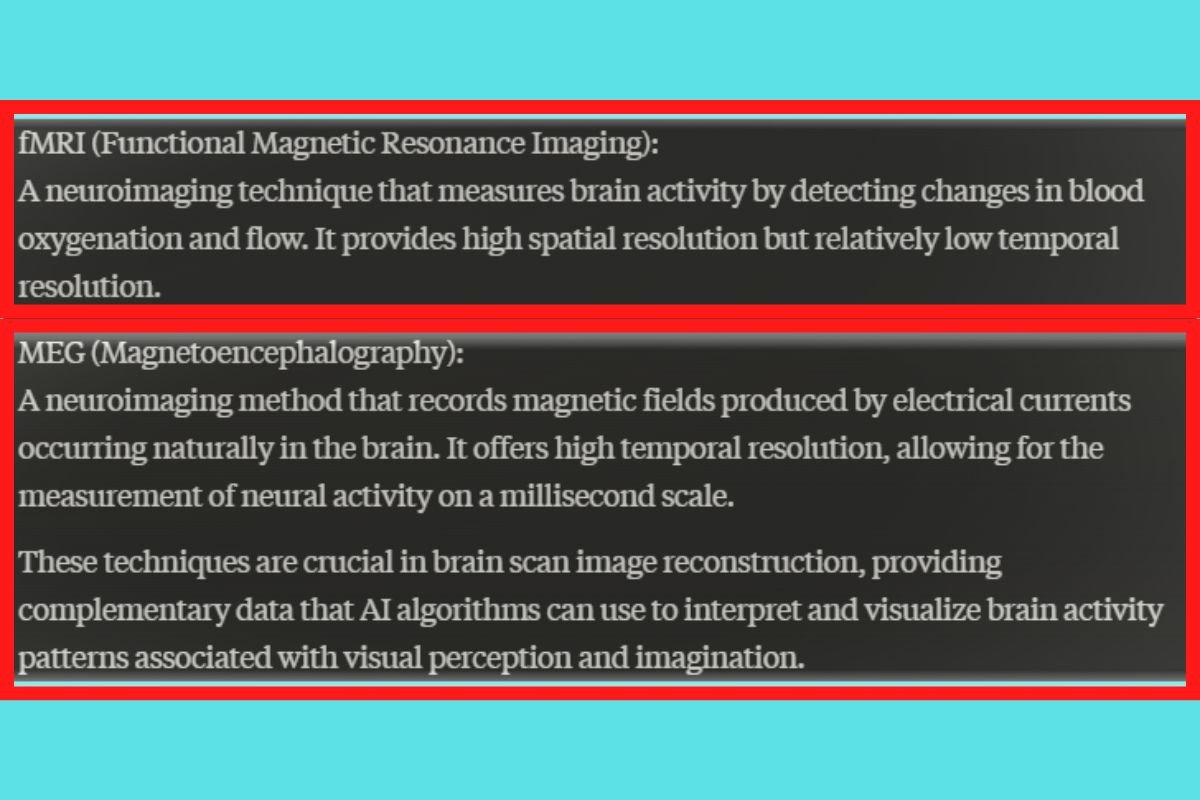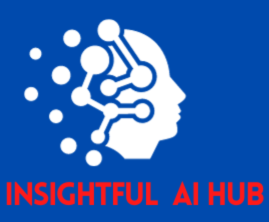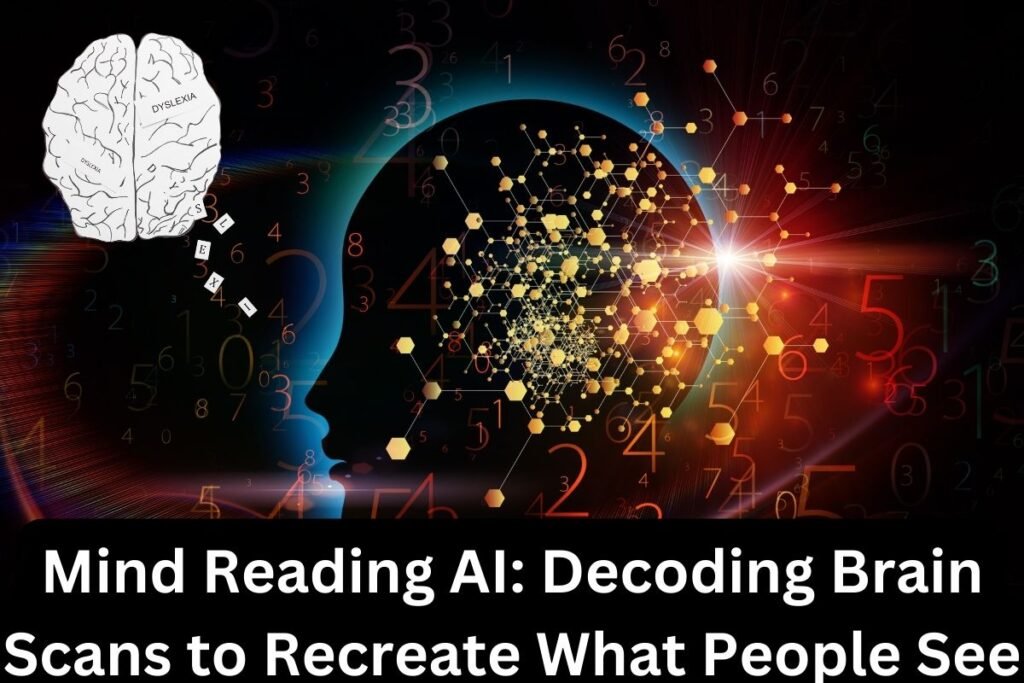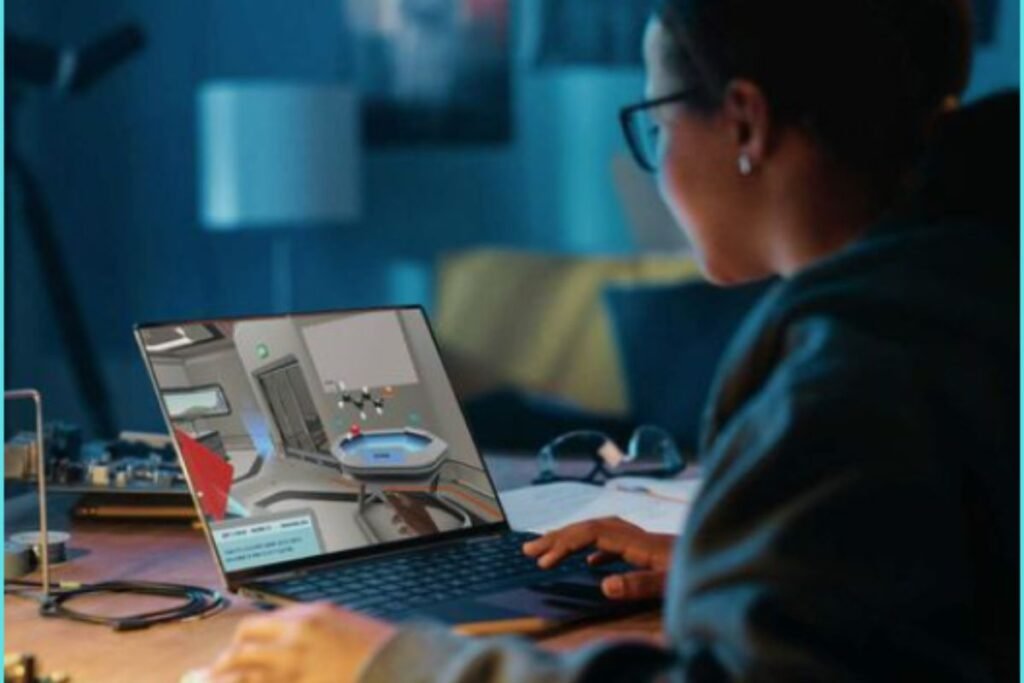In recent years, the intersection of artificial intelligence (AI) and neuroscience has led to groundbreaking developments in our understanding of the human brain. One of the most intriguing advancements is the ability of AI systems to reconstruct images from brain scans, also known as Mind Reading AI, effectively “reading” a person’s visual thoughts.
This blog post delves into the exciting world of AI-powered brain scan image reconstruction, exploring its current capabilities, potential applications, and the ethical considerations that come with this revolutionary technology.

The Science Behind Brain Scan Image Reconstruction
At its core, brain scan image reconstruction relies on the intricate relationship between neural activity and visual perception. When we see an image, our brains process this visual information through a complex network of neurons. Advanced neuroimaging techniques, such as functional Magnetic Resonance Imaging (fMRI) and Magnetoencephalography (MEG), allow researchers to capture this neural activity in real time.

The role of AI in this process is to decode these brain signals and translate them into visual representations. Machine learning algorithms, particularly deep learning neural networks, are trained on vast datasets that pair brain scan data with corresponding images. Over time, these AI models learn to recognize patterns in brain activity that correlate with specific visual features.
Recent Breakthroughs in AI Image Reconstruction
The field of AI-powered brain scan image reconstruction has seen remarkable progress in recent years. Some of the most notable advancements include:
- Improved Accuracy: Modern AI systems can now recreate images with unprecedented fidelity, capturing not just basic shapes and colors but also intricate details and textures.
- Real-time Processing: Advances in computing power and algorithm efficiency have enabled near-real-time reconstruction of images from brain scans.
- Diverse Image Types: Recent studies have demonstrated success in reconstructing various types of visual content, including faces, objects, and even abstract concepts.
- Cross-modal Reconstruction: Some research has shown promise in reconstructing images from different sensory modalities, such as reconstructing visual imagery from verbal descriptions.
Applications of Brain Scan Image Reconstruction
The potential applications of this technology are vast and diverse, spanning multiple fields:
- Medical Diagnostics: Brain scan image reconstruction could aid in diagnosing and understanding neurological disorders by providing insights into how patients perceive and process visual information.
- Brain-Computer Interfaces: This technology could enable more intuitive and efficient communication between the human brain and external devices, potentially revolutionizing assistive technologies for individuals with disabilities.
- Dream Analysis: By decoding brain activity during sleep, researchers might one day be able to visualize and study dreams in unprecedented detail.
- Artistic Expression: Artists could potentially create visual works directly from their imagination, bypassing traditional artistic mediums.
- Criminal Investigations: While ethically controversial, this technology could potentially assist in extracting visual information from eyewitnesses or suspects.
- Enhancing AI Systems: Insights gained from studying how the human brain processes visual information could lead to improvements in computer vision and image recognition technologies.
Challenges and Limitations
Despite the remarkable progress, several challenges and limitations remain:
- Individual Variability: Brain structure and function can vary significantly between individuals, making it challenging to create a universally applicable decoding model.
- Complex and Dynamic Nature of Thought: Our thoughts are often abstract, multi-layered, and rapidly changing, which can be difficult to capture and reconstruct accurately.
- Limited Resolution: Current neuroimaging techniques still have limitations in terms of spatial and temporal resolution, potentially affecting the detail of reconstructed images.
- Interpretation of Abstract Concepts: While concrete visual imagery can be reconstructed with increasing accuracy, abstract thoughts and concepts remain challenging to decode and visualize.
Ethical Considerations
The ability to “read” and visualize a person’s thoughts raises significant ethical questions:
- Privacy Concerns: The potential for involuntary access to a person’s thoughts could have serious implications for personal privacy and mental freedom.
- Consent and Data Protection: Strict protocols must be established to ensure that brain scan data is collected, used, and stored ethically and securely.
- Misuse and Manipulation: There are concerns about the potential misuse of this technology for surveillance, coercion, or manipulation of individuals.
- Cognitive Liberty: The right to keep one’s thoughts private and free from external interference may need to be explicitly protected as this technology advances.
- Accuracy and Misinterpretation: Inaccurate reconstructions or misinterpretations of brain activity could lead to false conclusions with potentially serious consequences.
Future Directions and Potential Impact
As AI and neuroimaging technologies continue to advance, we can expect further improvements in the accuracy and capabilities of brain scan image reconstruction. Some potential future developments include:
- Enhanced Resolution: Improvements in neuroimaging techniques and AI algorithms could lead to even more detailed and accurate image reconstructions.
- Broader Cognitive Decoding: Beyond visual imagery, future systems might be able to decode and reconstruct other forms of mental content, such as memories, emotions, or abstract thoughts.
- Two-way Brain-Computer Interfaces: Advanced systems might not only read but also write information directly to the brain, opening up new possibilities for learning, memory enhancement, and treatment of neurological disorders.
- Integration with Other Technologies: Combining brain scan image reconstruction with technologies like augmented reality could create new immersive experiences and forms of communication.
Conclusion
AI-powered brain scan image reconstruction represents a fascinating frontier in neuroscience and artificial intelligence. This technology offers unprecedented insights into the workings of the human mind and holds immense potential for applications in medicine, technology, and beyond. However, as we continue to push the boundaries of what’s possible, it’s crucial to approach these advancements with careful consideration of their ethical implications and potential societal impact.
As research in this field progresses, ongoing dialogue between scientists, ethicists, policymakers, and the public will be essential to ensure that this powerful technology is developed and used responsibly. The ability to peek into the human mind through AI is no longer the stuff of science fiction – it’s a reality that’s unfolding before our eyes, promising to reshape our understanding of consciousness, cognition, and the very nature of human thought.
Sources:
- fMRI Brain Decoding and Its Applications in Brain–Computer Interface: A Survey – PMC
- Toward a real-time decoding of images from brain activity
- This A.I. Used Brain Scans to Recreate Images People Saw | Smithsonian
- AI re-creates what people see by reading their brain scans | Science
- Claude 3.5 Sonnet






